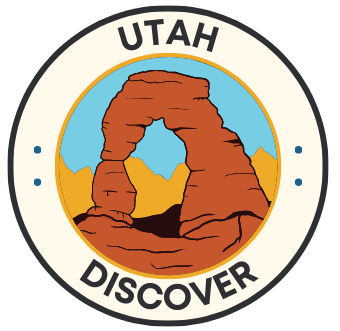If you’re fascinated by ancient history and love exploring, then McConkie Ranch Petroglyphs in Utah should be at the top of your list. Nestled in the scenic Dry Fork Canyon near Vernal, these incredible rock carvings offer a window into the lives of the Fremont people who lived over a thousand years ago. We’ve visited several times as a family and we are always amazed by how great these petroglyphs are. This guide will help you plan your visit, from getting there and parking to hiking trail options and what you’ll see while you’re there. Whether you’re an avid hiker, Uintah Basin local, or just looking for a fun day trip, McConkie Ranch is one of the best places in Utah to see some incredible Utah Petroglyphs.
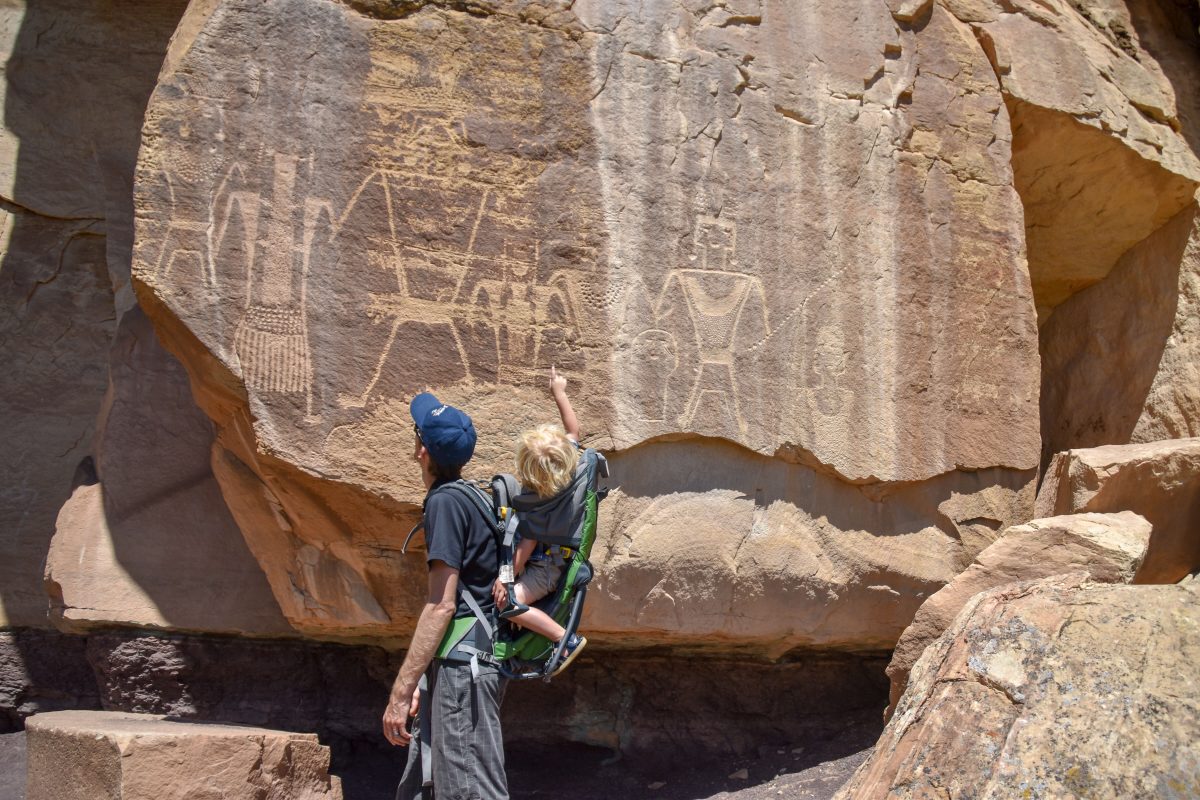
Getting To McConkie Ranch
One thing that we love about visiting McConkie Ranch is how easy it is to access. Unlike many other Utah Petroglyph sites that are remote and require long dirt roads, or huge hikes, McConkie Ranch is just off a paved road and the hikes are short!
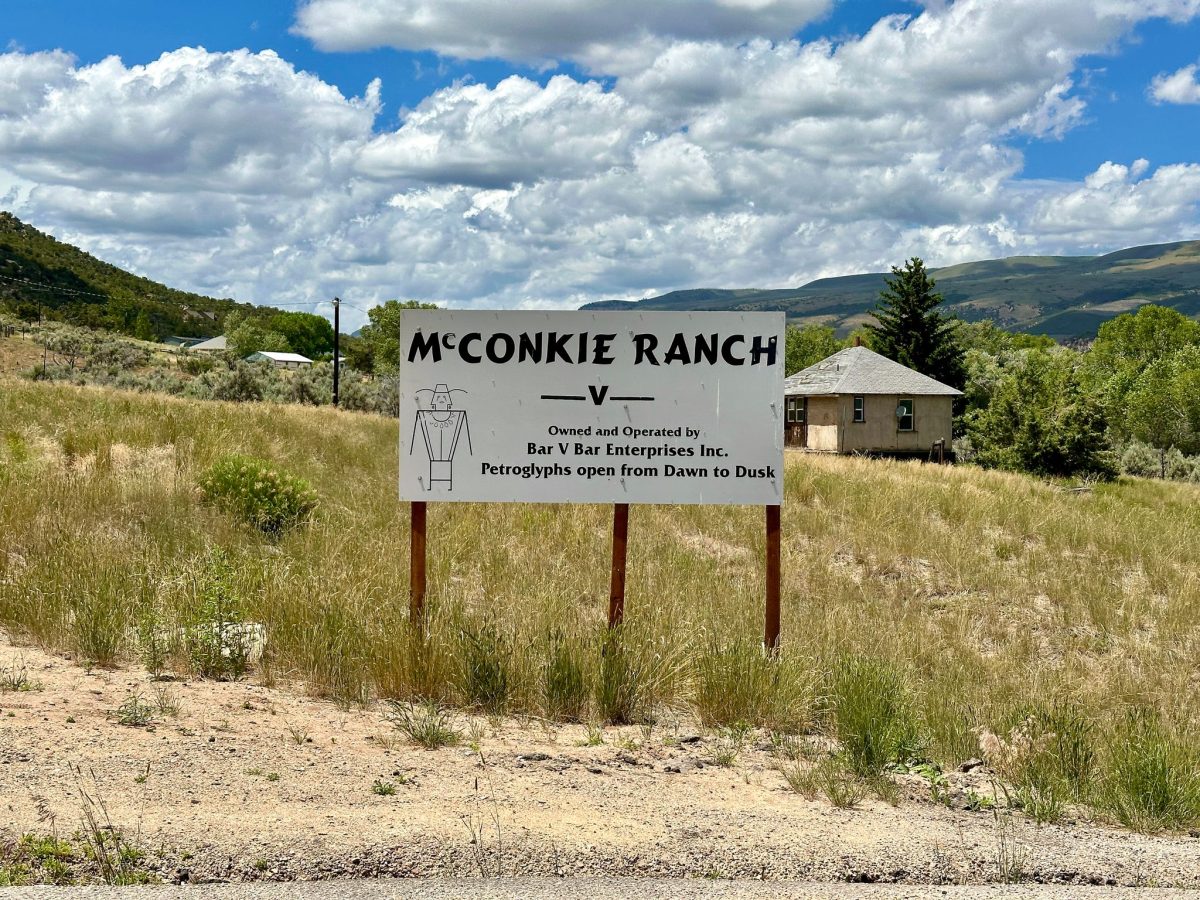
From Vernal, head out of town headed west on UT-121 for about 4 miles. Turn North on Dry Fork Canyon Road (there is a brown sign directing your to Dry Fork). And keep going for about 4.5 miles. McConkie Ranch is on the right and is well-marked.
Where to Park
Upon arrival, you’ll find a designated parking area at McConkie Ranch. There is a small information shack and restrooms there. Inside the shack, you’ll find a donation box. The suggested donation for visiting is $5, and is totally on your honor. Truthfully, we recommend paying more because it really does take a lot of work to maintain and protect the area.
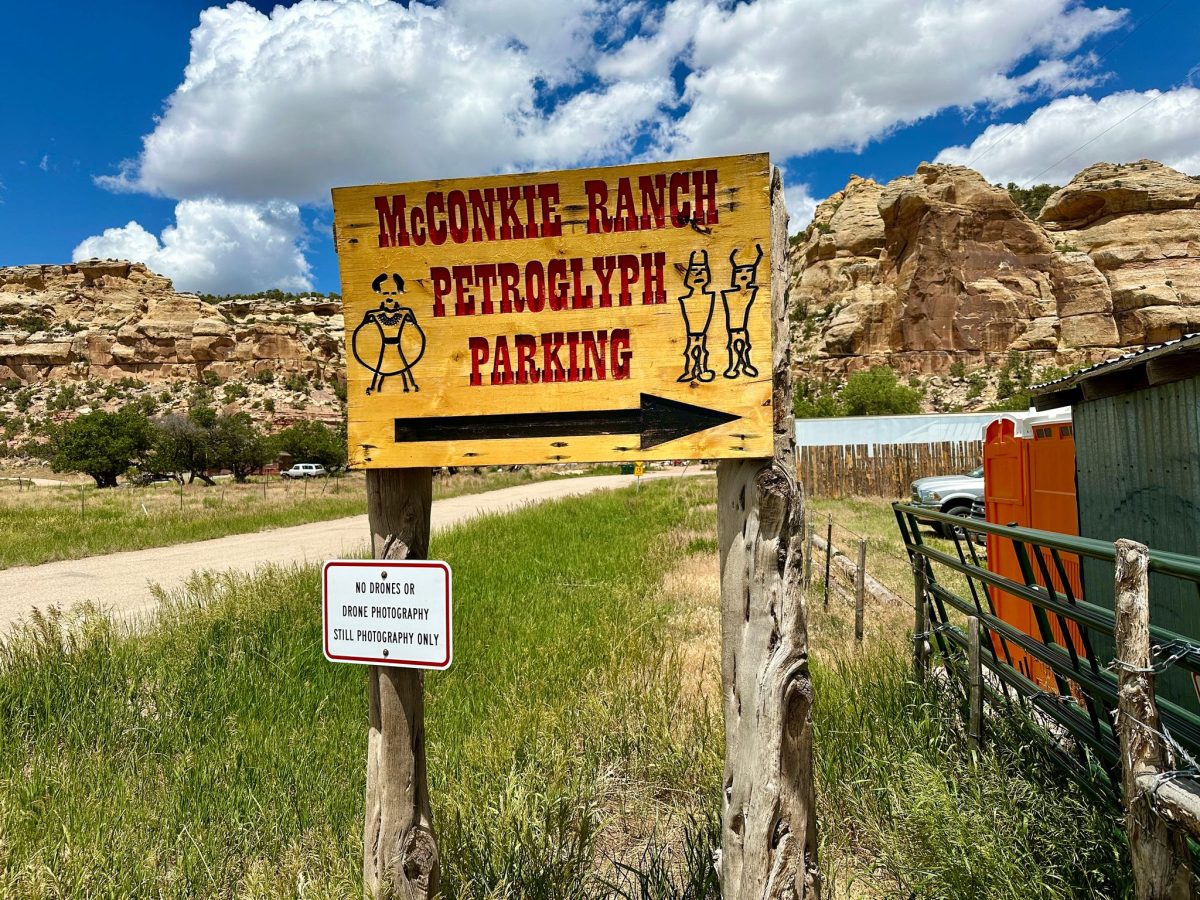
If you’ve been to McConkie Ranch in the past, you’ll notice that the parking area is a little bit closer to the road and the trails have been a little adjusted. Please park in the new, designated parking area, not the old parking area.
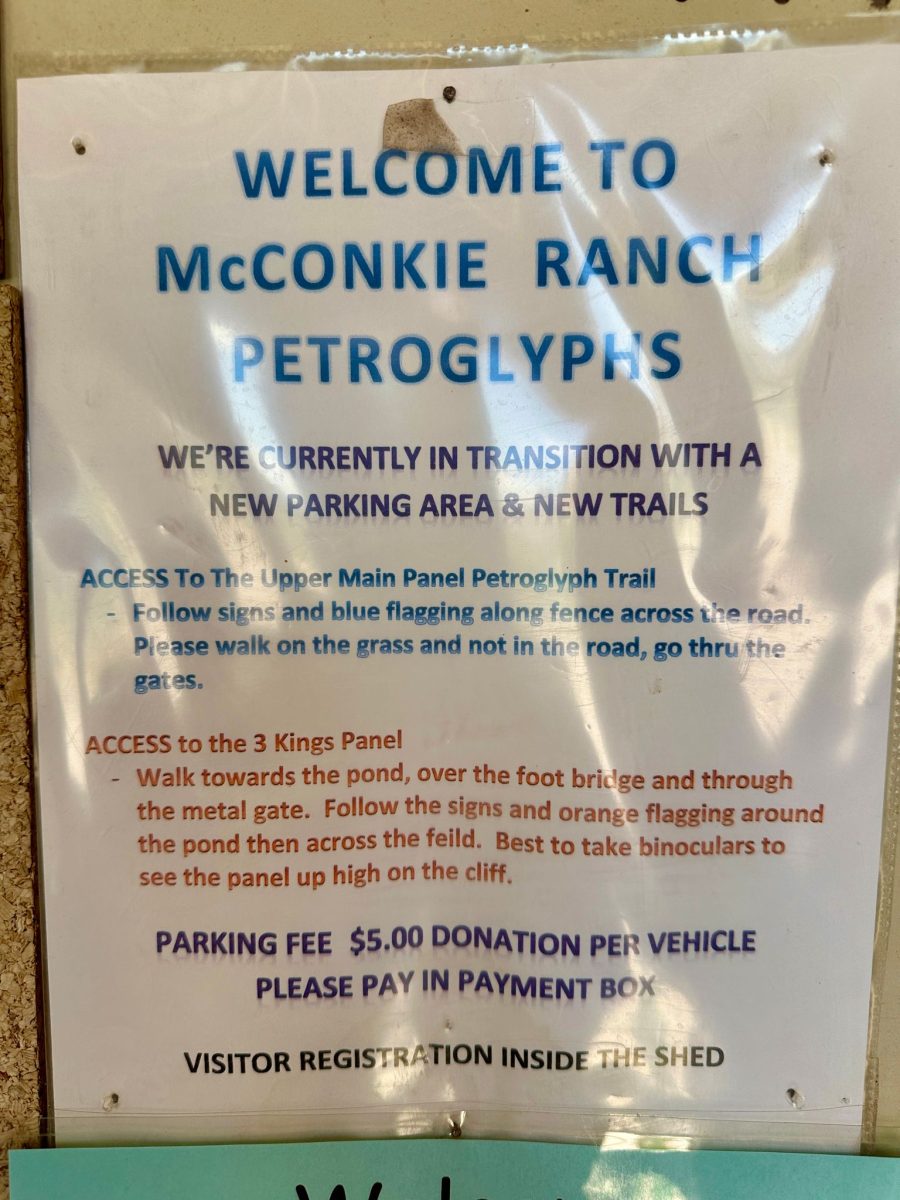
Hiking Options at McConkie Ranch
There are two primary trails to explore at McConkie Ranch, each offering a unique experience. The Three Kings Trail is slightly longer and heads out of the east end of the parking lot, and the Main Panel Trail takes off to the west end of the parking lot. For first time visitors, I recommend visiting the Main Panel Trail first and then going to the Three Kings Trail if you have time after.
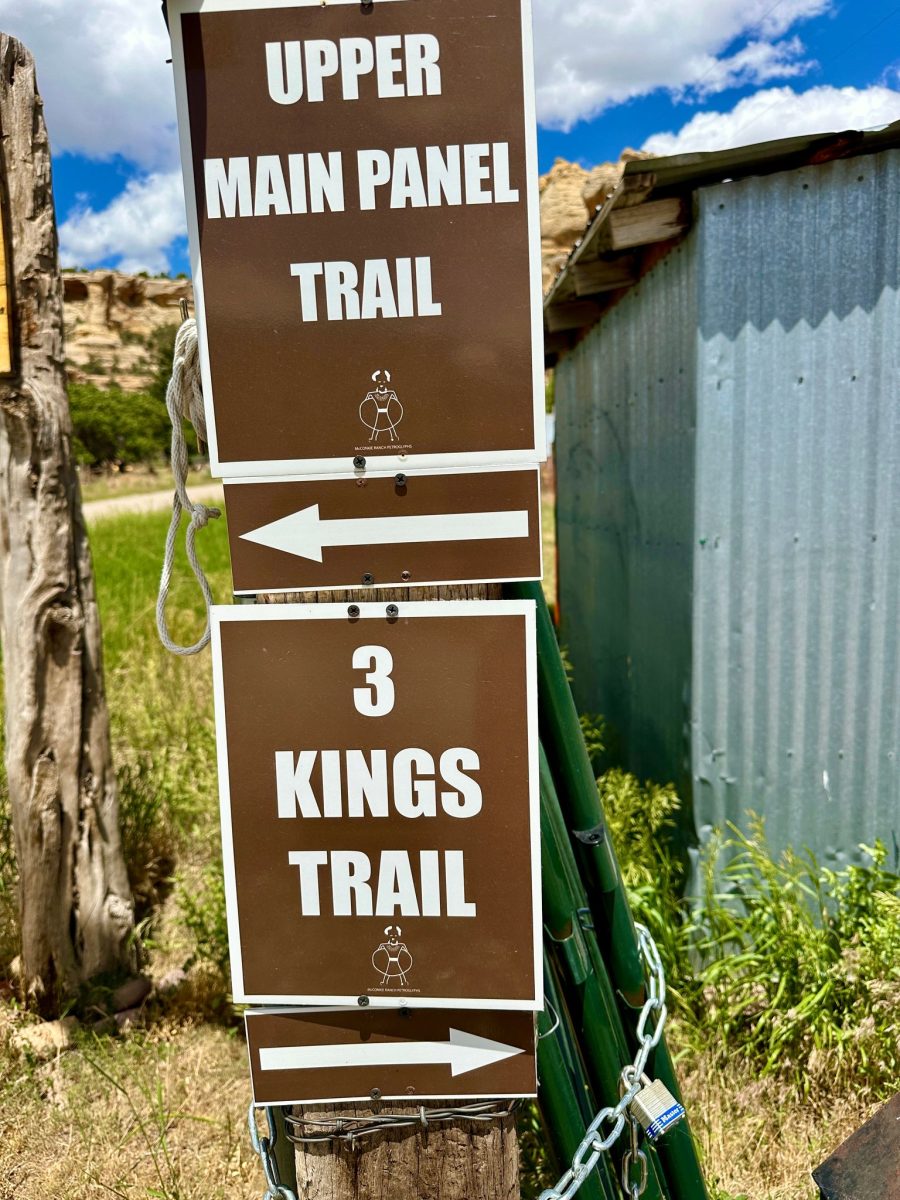
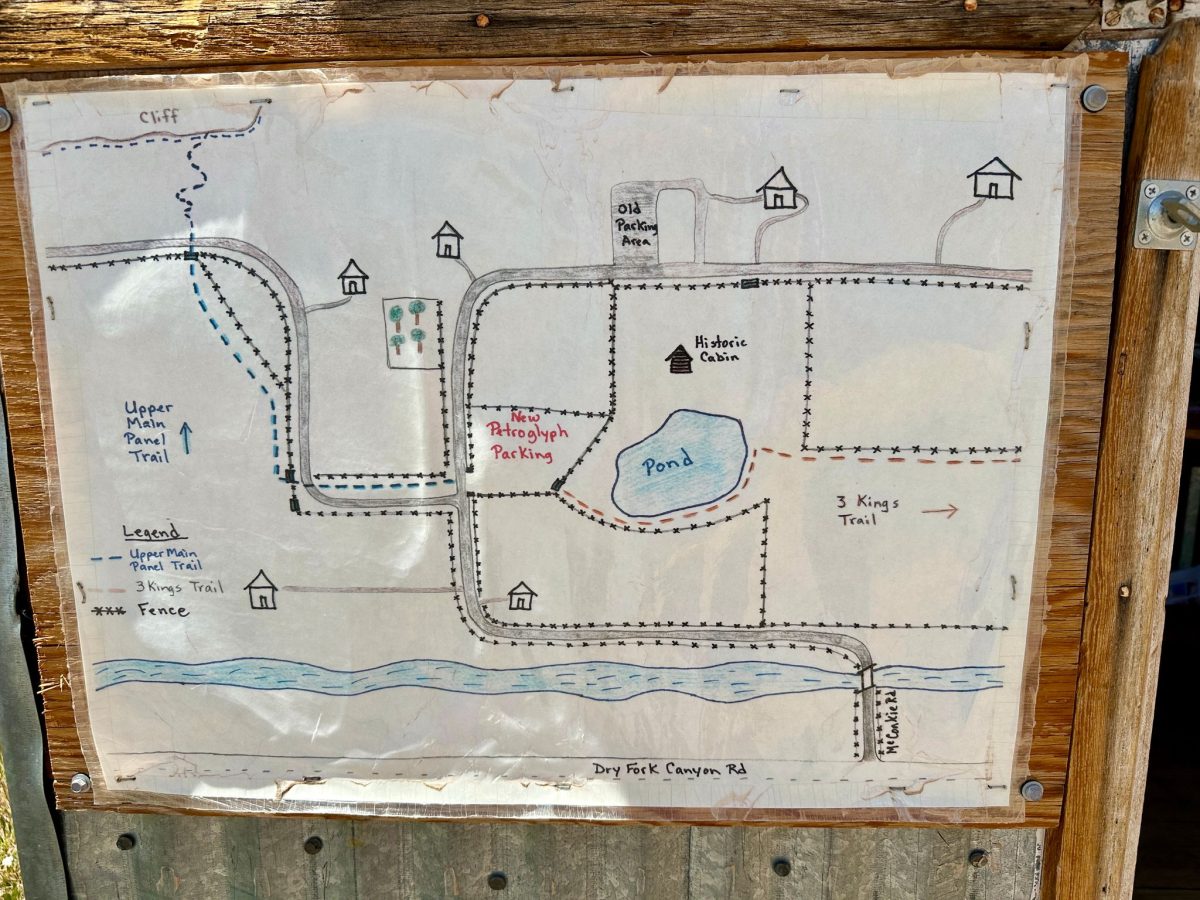
Main Panel Trail
- Distance: About 1 mile round trip.
- Difficulty: Easy to moderate; mostly flat with a few slight inclines.
The Main Panel Trail is more accessible and is really easy to do with young kids. In fact, my kids prefer it (even the teens) because they can run through the fields most of the time, and there’s only a little bit of scrambling. Once you get up to the cliffs, you’ll see a variety of figures, wildlife, and even some hunters. We love that these petroglyph panels are really easy to get right next to and view, so that everyone can get a better appreciation of the art.
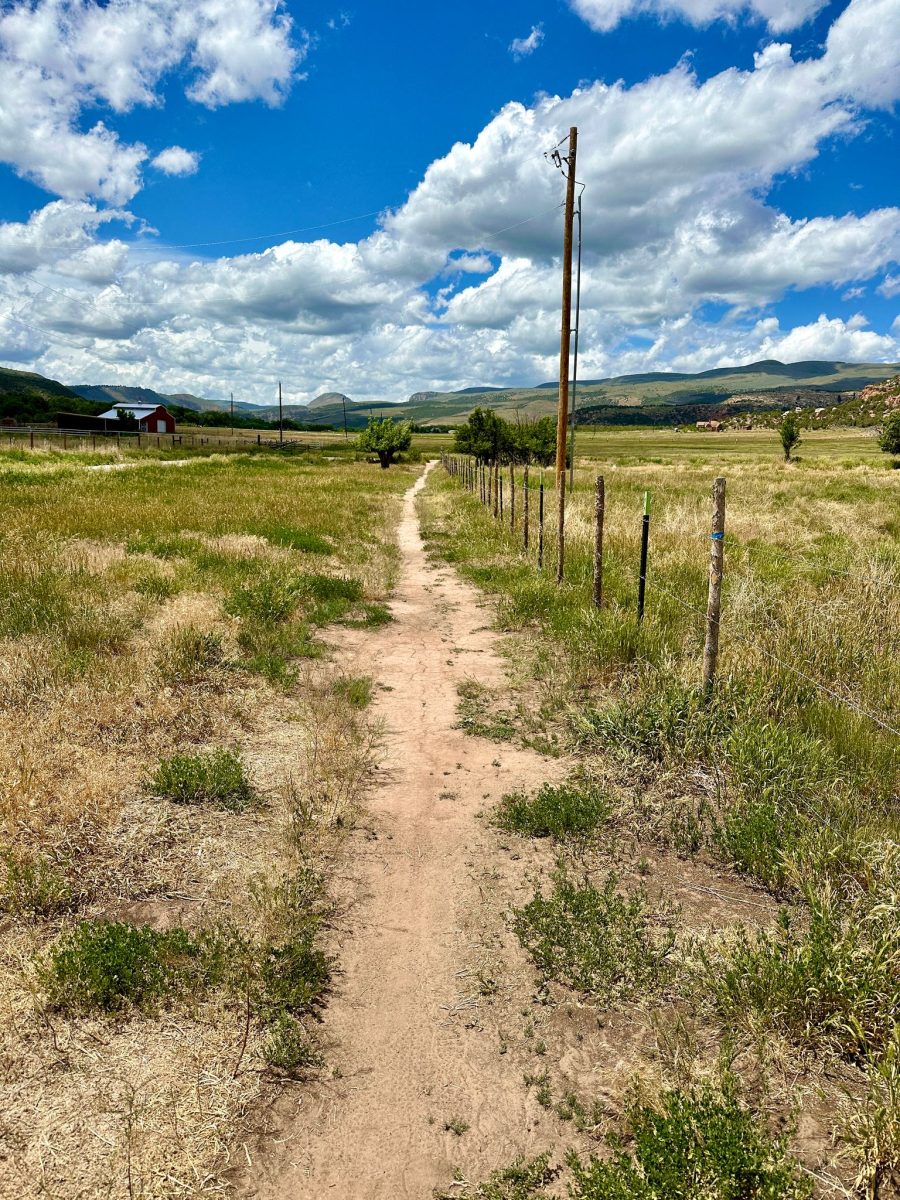
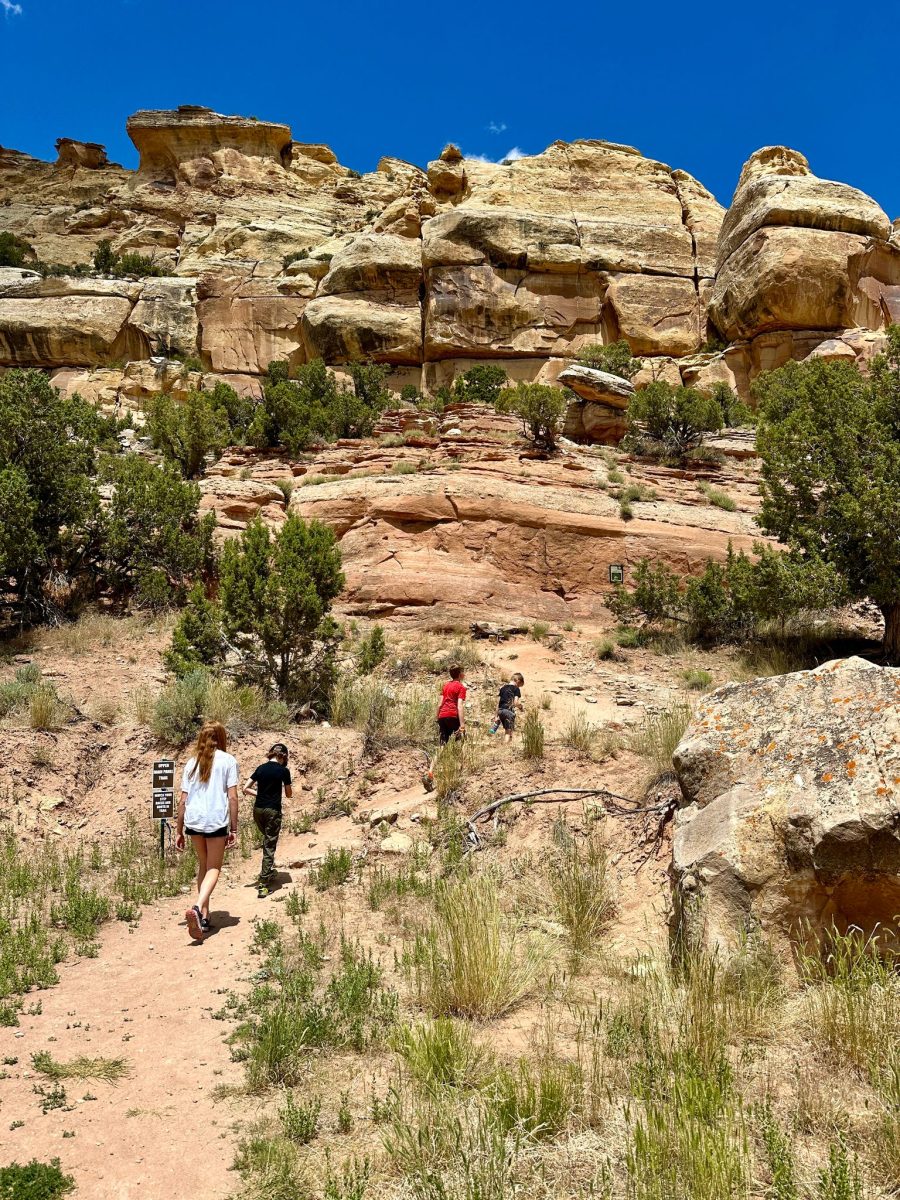
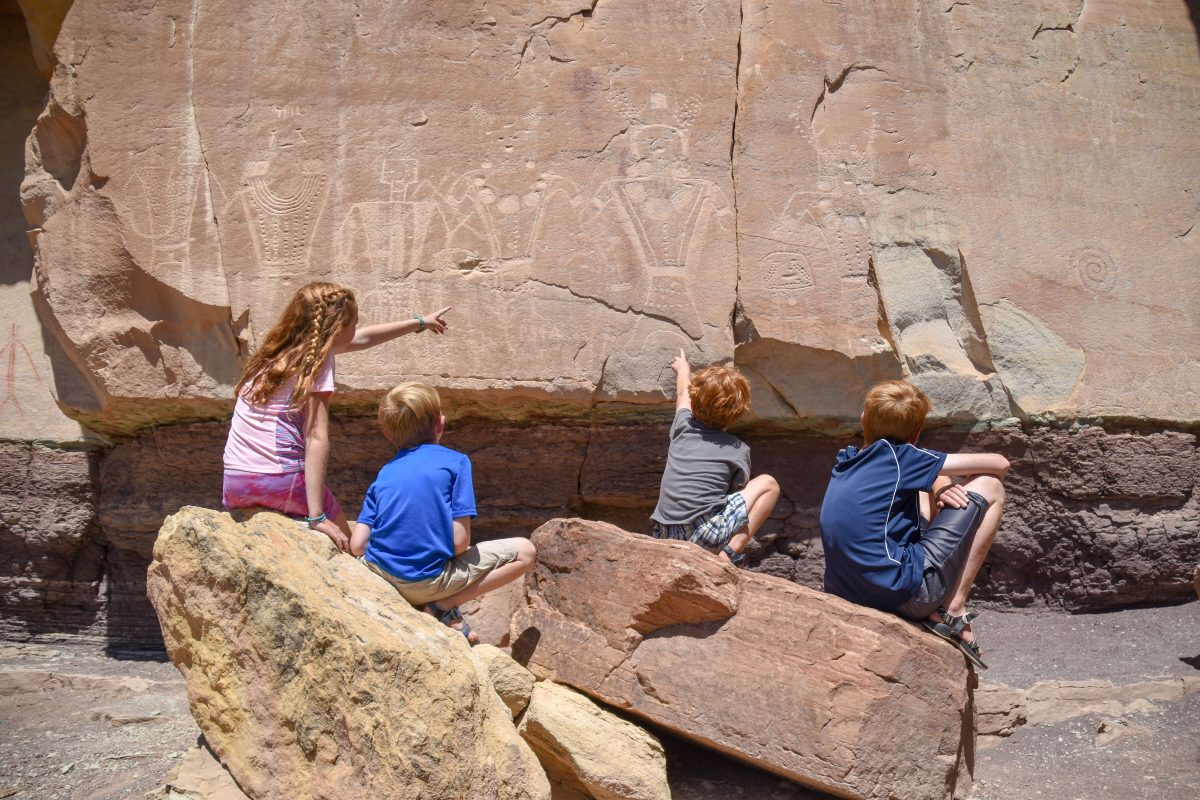
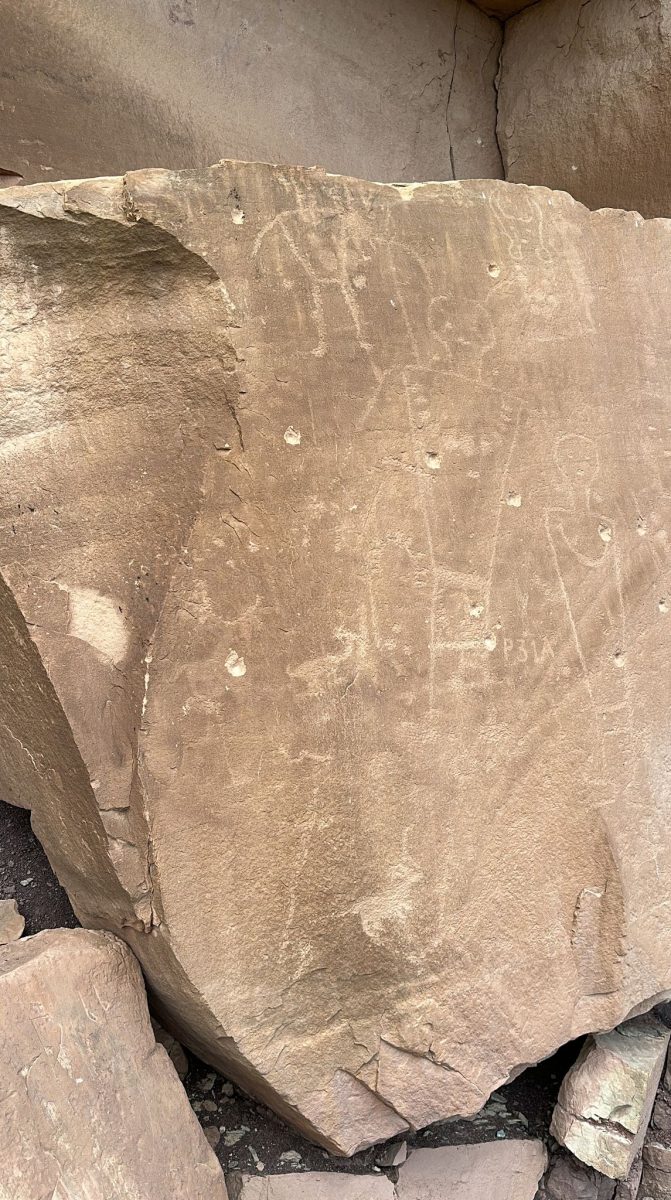
Three Kings Trail
- Distance: Approximately 1.5 miles round trip.
- Difficulty: Moderate to difficult due to steep and rocky sections.
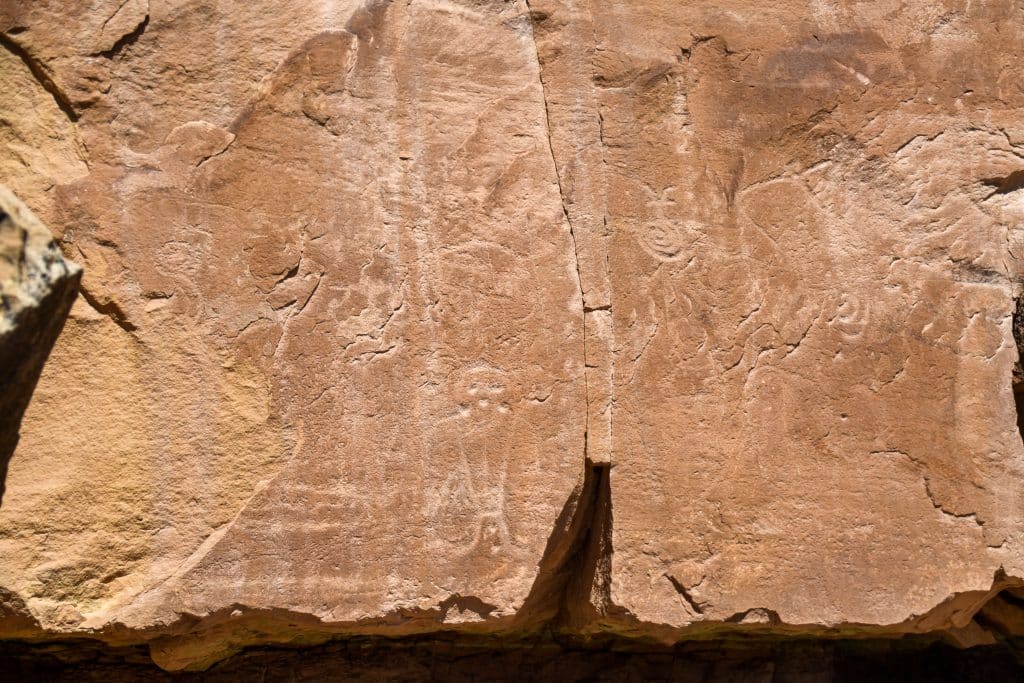
The highlight of this trail is the Three Kings Panel, an impressive and detailed petroglyph panel featuring large figures that are very intricately carved. The trail offers numerous other petroglyphs along the way, depicting various animals and human figures as well as plenty of abstract shapes. Some sections of the trail may require a bit of scrambling, so we recommend wearing good hiking shoes.
While there are some petroglyphs alongside the trail, you’ll need binoculars to see others.
Tips to Avoid the Crowds at McConkie Ranch
On our last visit, we were there on a Friday afternoon and even though there were about 8 cars in the parking lot, we didn’t see anyone else on the trail. Weekends and holidays can get very busy here.
There isn’t really any shade along the trail, so if you’re visiting during the summer, plan to go early in the day or in the early afternoon to avoid the scorching sun. It was only about 80 degrees on our last visit, but since we were directly in the sun the whole time, it felt much hotter.
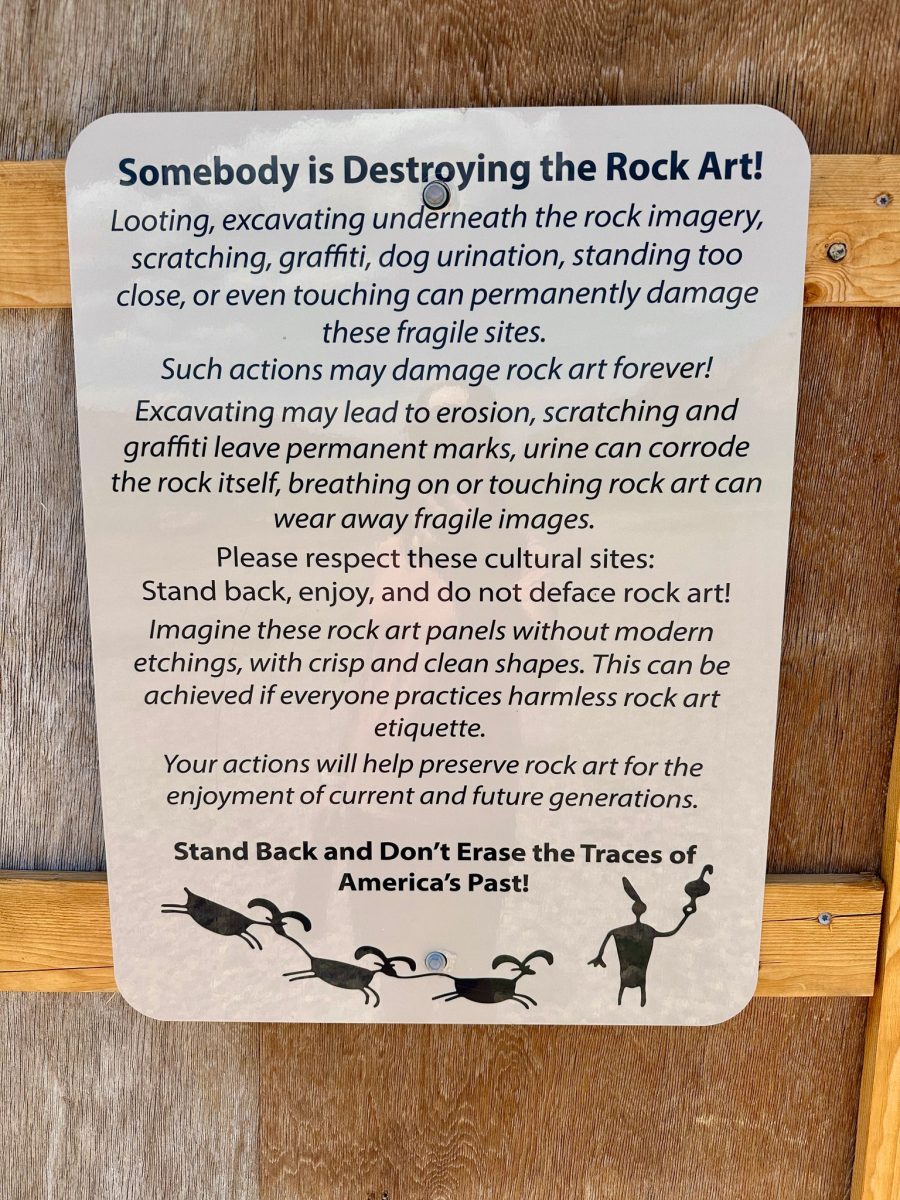
How Long to Spend at McConkie Ranch:
To fully appreciate McConkie Ranch Petroglyphs, plan to spend at least 2 to 3 hours. This will give you enough time to leisurely hike both trails, take plenty of photos, and soak in the historical significance of the site. If you just want to visit the Main Panel, then you can easily visit in just an hour.
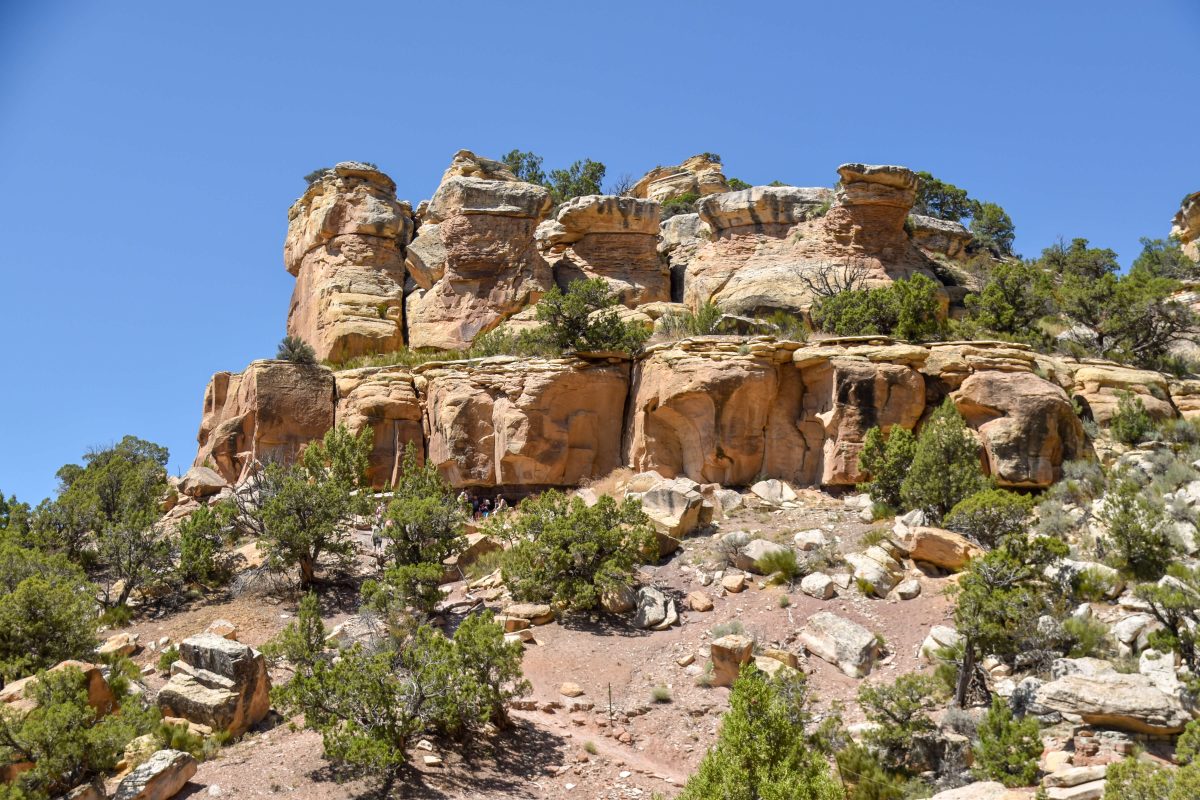
What You’ll See Along the Way:
As you hike, you’ll encounter a variety of petroglyph panels etched into the sandstone cliffs. These ancient carvings, created by the Fremont people over 1,000 years ago, depict a range of images, including:
- Human Figures: Many of the petroglyphs depict human-like figures, some with intricate headdresses or holding tools.
- Animals: Look for carvings of deer, bighorn sheep, snakes, and other wildlife native to the area.
- Abstract Symbols: There are also many abstract and geometric designs, the meanings of which remain a mystery.
- Scenic Views: In addition to the petroglyphs, the trails offer beautiful views of Dry Fork Canyon, with its rugged terrain and vibrant flora.
Tips for Your Visit to the Vernal Petroglyphs at McConkie Ranch
Bring plenty of water, especially during the hotter months, as there are no facilities along the trails or at the trailhead (outside of an outhouse). Snacks are also a good idea to keep your energy up.
Wear sturdy hiking shoes with good traction. Both trails have you walking up some steep switchbacks to get up to the cliffs, so a solid pair of shoes is a good idea, particularly for the Three Kings Trail. Also keep in mind that the trails are exposed, so sunscreen and hats are essential.
Please remember to not touch the petroglyphs. This can be a challenge, especially on the Main Panel since the petroglyphs are right next to you, but touching them can degrade and eventually destroy them.
